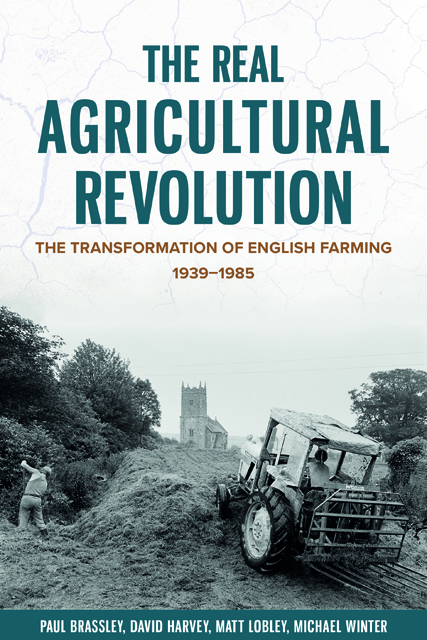Book contents
- Frontmatter
- Contents
- Figures and Tables
- Preface and Acknowledgements
- Abbreviations
- 1 Introduction: Exploring Agricultural Change
- 2 The Organisation of Agricultural Science, 1935–85
- 3 Knowledge Networks in UK Farming, 1935–85
- 4 Agricultural Policy, 1939–85
- 5 Dairy Farming
- 6 Land and Capital
- 7 Labour and Machinery
- 8 Specialisation and Expansion
- 9 The Declining Enterprises: Pigs and Poultry
- 10 Conclusions
- Bibliography
- Index
7 - Labour and Machinery
Published online by Cambridge University Press: 04 January 2024
- Frontmatter
- Contents
- Figures and Tables
- Preface and Acknowledgements
- Abbreviations
- 1 Introduction: Exploring Agricultural Change
- 2 The Organisation of Agricultural Science, 1935–85
- 3 Knowledge Networks in UK Farming, 1935–85
- 4 Agricultural Policy, 1939–85
- 5 Dairy Farming
- 6 Land and Capital
- 7 Labour and Machinery
- 8 Specialisation and Expansion
- 9 The Declining Enterprises: Pigs and Poultry
- 10 Conclusions
- Bibliography
- Index
Summary
Labour
In 1939, 4.6 per cent of the working population of Great Britain was engaged in agriculture; by 1975, only 1.65 per cent (of a larger workforce) were still in farming. No account of technical change in agriculture can omit some mention of agricultural labour, for while increased use of capital was the cause of some technical changes, decreasing use of labour was, at least in part, a result of technical change and a cause of increasing labour productivity.
By 1939, the decline in the agricultural labour force from the peak that it had reached in 1851 was a well-established trend. It had especially affected the employed sector, those other than the farmers and their families. A contemporary analysis of the position mentioned the search for better wages and housing conditions among the reasons for ‘the rural exodus’, and a consequent shortage in both the traditional and new (mechanical) skills needed in farming, together with potential changes in the vitality of village life. Ironically, this was written just as the farm labour force was about to rise for the first time in eighty years in response to the wartime increase in the demand for home-produced food. For today’s reader, accustomed to seeing cereals harvested by combine harvester and hearing of automatic milking machines, it is worth remembering how much hand work, from stooking sheaves to milking, was needed during the war. Extra output needed extra labour. The regular labour force increased hardly at all between 1939 and 1944 (by less than 1 per cent), but it was assisted by far more casual workers, members of the Women’s Land Army, and eventually prisoners of war, so that the total labour force rose by more than 20 per cent by 1944, although it was not evenly distributed. In 1941, the data from the National Farm Survey found that 44 per cent of holdings in England and Wales had no regular labour apart from the farmer and his or her spouse. Numbers of hired workers rose still further with the post-war growth in output, and still included German prisoners of war until 1947.
- Type
- Chapter
- Information
- The Real Agricultural RevolutionThe Transformation of English Farming, 1939-1985, pp. 183 - 198Publisher: Boydell & BrewerPrint publication year: 2021

